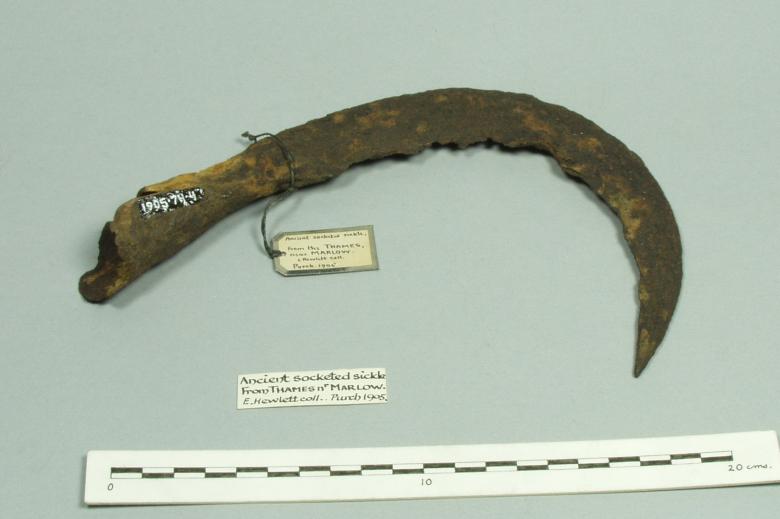The smoke rises; it is gently diffused out through the thatch and from under the eaves. Unlike in an igloo the lungs don't end up full of black smoke....well, to be a bit basic....blowing my nose having spent at least eight hours working inside the house all day did not show any black on a white hankie

The roundhouse does not reach the magic 20 or 21degC; it's not intended to. It's simply shelter and a warm, calm, area out of the vagaries of the weather. The fire is a gentle warmth, it's cooking, it's light 'enough'....as the song says of the peat fire flames, "light for lit, for love, for laughter", not to read by, or do close work by, it's a social warmth.
The smoke is actually a good thing. The build up of soot on the upper timbers and thatch stops moulds and kills insects; it protects, it preserves. It's only the past few generations that have considered smoke a bad thing, and those are generations who lived 'enclosed' lives.
Chimney technology suits modern houses (relative modernity that is); it does not suit a round house. It is a waste of heat and protection and if the fuel is chosen with appropriate care then the smoke has other uses too. It used to be considered medicinal to burn certain plant; as indeed real tobacco, not the horrendously adulterated stuff sold nowadays to the addicted was originally used for. Sweet grass, mugwort, etc., are known even yet as 'hearth herbs'
Living in a roundhouse is an entire mind shift and life style adjustment. It is totally different from living in a cabin too.
There are no draughts, just gently baffled air. It's a micro climate for a people who lived outdoors most of the time. No condensation, no black mould....occasional fungi growing from timbers though

It's amazing how fast we adapt and find comfort within one though

Mary




